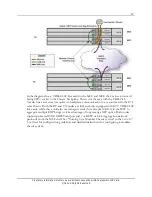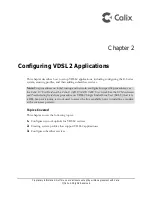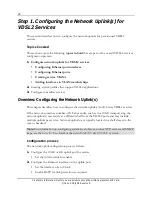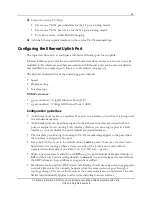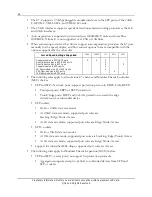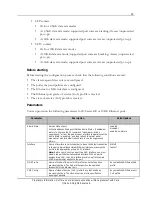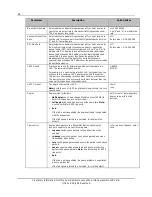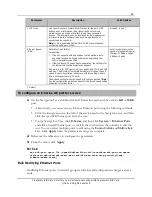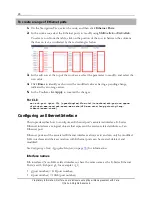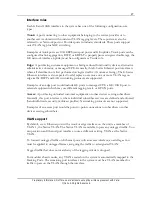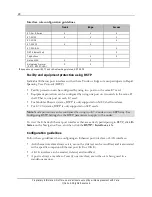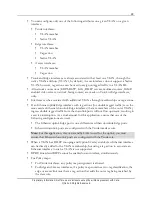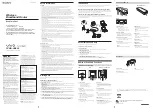
14
Proprietary Information: Not for use or disclosure except by written agreement with Calix.
© Calix. All Rights Reserved.
4 x 1G ports for uplink/downlink
Identical to E7-2 with a VDSL2-48 card, with the following exceptions:
Modular chassis is not supported
LAG supports only two ports in a group, either ports 1&2 or ports 3&4. LAG
group may NOT include ports across the pair boundary. For example, a LAG
with ports 1&3, or 2&3 are not supported.
E5-48C Combo Node
Fixed 1RU form factor
48 x VDSL2/ADSL2+ Fallback ports
48 x POTS ports
4 x 1G ports for uplink/downlink
Identical to E7-2 with a VDSL2-48C card, with the following exceptions:
Modular chassis is not supported
LAG supports only two ports in a group, either ports 1 and 2 or ports 3 and 4.
LAG group may NOT include ports across the pair boundary. For example, a
LAG with ports 1 and 3, or 2 and 3 are not supported.
Multiple modes of DSL deployment
All xDSL ports on the VDSL2 line cards can be configured independently, for any of the
xDSL modes of operation. The length and gauge of the copper pair loop determines the
DSL mode(s) that can be supported for each port, and the train rate, and the derived service
rate that the service provider is able to deliver to the subscriber. During the "handshake"
process, the xDSL ports and the CPE agree to determine the DSL mode automatically. The
E-Series trains the port at the DSL mode that provides the highest line performance possible,
in the following order of priority:
1.
VDSL2 PTM
2.
ADSL2+ PTM
3.
ADSL2+ ATM
4.
ADSL2 PTM
5.
ADSL2 ATM
6.
ADSL ATM
xDSL can operate using either of two transmission convergence layers (PTM-TC, ATM-TC)
and in one of several modes, listed above.

















